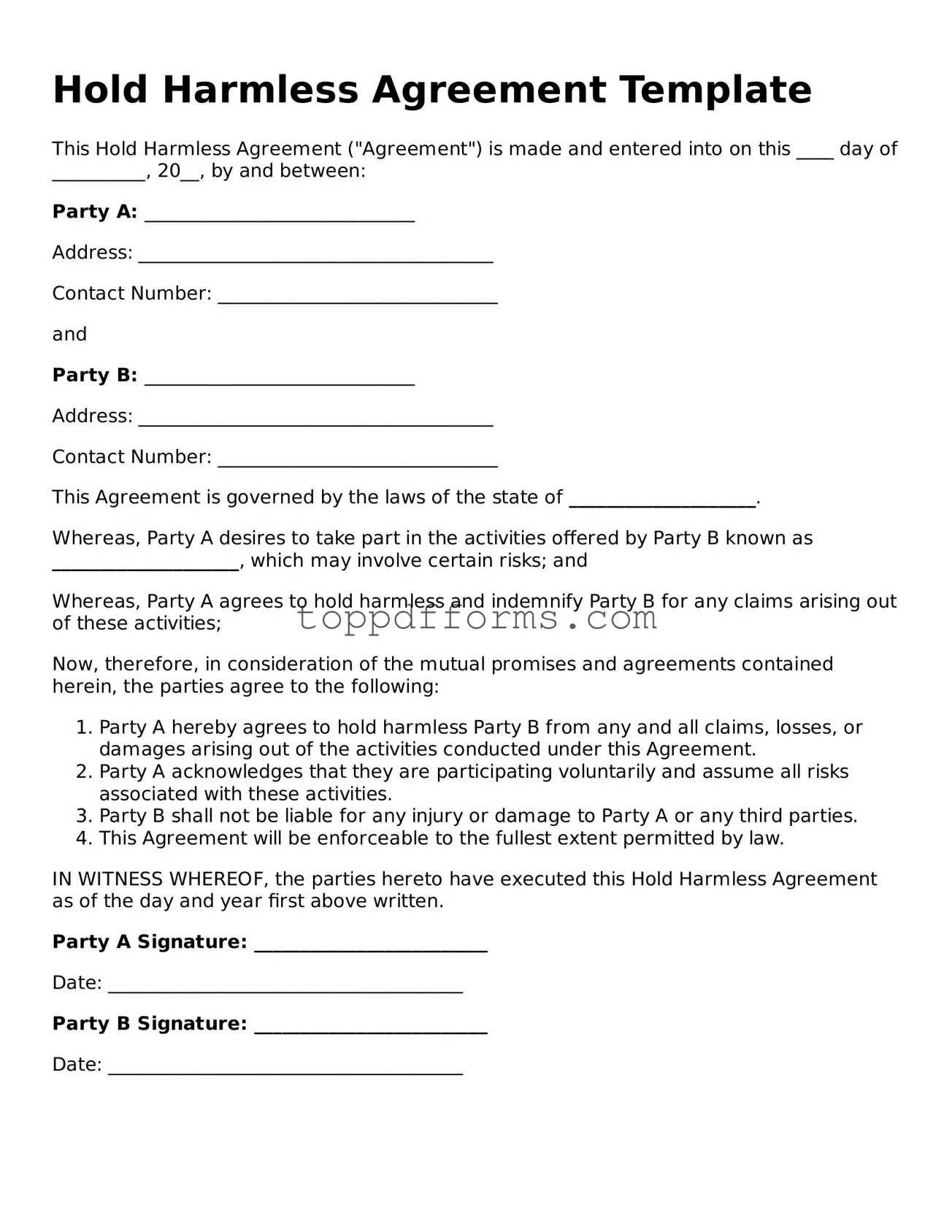When individuals fill out a Hold Harmless Agreement form, they often overlook critical details that can affect the enforceability of the document. One common mistake is failing to clearly identify the parties involved. The agreement should specify who is being held harmless and who is providing the indemnity. Without precise identification, the intent of the agreement may become ambiguous, potentially leading to disputes later.
Another frequent error is neglecting to include a clear description of the activities or circumstances covered by the agreement. The language should be specific enough to inform all parties about the scope of the indemnity. Vague descriptions can lead to confusion and may not provide the protection intended. It is essential to articulate the risks associated with the activities to ensure that all parties understand what they are agreeing to.
Many individuals also fail to consider the implications of the agreement's duration. The timeframe during which the indemnity applies should be clearly stated. If the agreement does not specify whether it is valid for a particular event or ongoing activities, it may create uncertainty. This ambiguity can undermine the purpose of the agreement and may leave parties unprotected when they expect coverage.
Additionally, people often forget to review the legal requirements for enforceability in their jurisdiction. Each state may have different rules regarding Hold Harmless Agreements, including limitations on liability and specific language that must be included. Ignoring these legal nuances can result in an agreement that is unenforceable, leaving parties vulnerable to claims they intended to avoid.
Another mistake involves the lack of signatures or proper execution of the agreement. A Hold Harmless Agreement must be signed by all parties involved to be legally binding. Failing to obtain signatures or not following the correct procedure for execution can invalidate the agreement. It is crucial to ensure that all parties have acknowledged and agreed to the terms in writing.
Lastly, individuals often overlook the importance of consulting legal counsel before finalizing the agreement. While it may seem straightforward, legal documents can have significant implications. Seeking professional advice can help identify potential pitfalls and ensure that the agreement meets all necessary legal standards. This proactive approach can prevent costly misunderstandings and disputes in the future.
